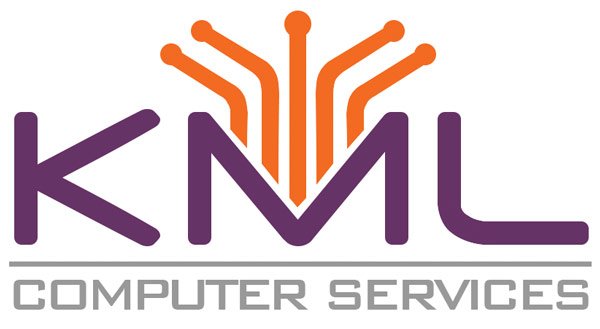
What is Cybersecurity?
Cybersecurity refers to the practice of protecting systems, networks, data, and programs from digital attacks. These cyberattacks are typically aimed at accessing, changing, or destroying sensitive information, extorting money from users, or interrupting normal business processes. The scope of cybersecurity encompasses a variety of measures including firewalls, antivirus software, encryption, best password practices, multi-factor authentication, physical access restriction, and user education to safeguard digital assets from malicious actors.
Importance of Cybersecurity for Small Businesses
While large corporations often make headlines when they suffer a data breach, small businesses are increasingly becoming targets for cyberattacks. The importance of cybersecurity for small businesses cannot be overstated:
Financial Impact
A cyberattack can be financially devastating for small businesses. Costs associated with data breaches, including legal fees, regulatory fines, and lost business, can cripple a small business’s finances.
Reputation Management
Trust is crucial for small businesses, and a cybersecurity incident can erode customer confidence. Once trust is lost, it is incredibly difficult to regain, making it essential to maintain strong cybersecurity practices.
Compliance Requirements
Small businesses, especially those in regulated industries like healthcare or finance, must adhere to specific cybersecurity standards. Failing to comply with these regulations can result in hefty fines and penalties.
Operational Downtime
Cyberattacks can cause significant operational disruptions. For small businesses that may not have the resources to quickly recover, this downtime can result in lost revenue and long-term business damage.
Common Misconceptions About Cybersecurity in Small Businesses
Several myths prevent small businesses from adequately protecting themselves against cyber threats:
“We’re too small to be a target”
Many small business owners believe that cybercriminals only go after large companies. However, attackers often target small businesses because they are less likely to have robust cybersecurity measures in place, making them easier targets.
“Cybersecurity is too expensive”
While comprehensive cybersecurity can be costly, there are many affordable measures that small businesses can implement. Moreover, the cost of a cyberattack often far exceeds the cost of preventative security measures.
“We have antivirus software, so we’re safe”
Antivirus software is only one component of a strong cybersecurity strategy. Relying solely on antivirus software can leave a business vulnerable to other types of cyberattacks, such as phishing, ransomware, or insider threats.
“Cybersecurity is an IT issue, not a business issue”
Effective cybersecurity requires a company-wide approach. Every employee, from entry-level to executives, plays a role in maintaining cybersecurity, whether it’s through best password practices or being aware of phishing tactics.
Threat Landscape Statistics for Small Businesses
As of 2024, small businesses in the United States face an increasingly severe cybersecurity landscape. Here are some key statistics and trends (statistics courtesy of Expert Beacon):
Prevalence of Cyberattacks
Approximately 61% of small businesses were targeted by cyberattacks in the past year, with malware (18%), phishing (17%), and data breaches (16%) being the most common types of attacks. Social engineering attacks, including phishing, are particularly problematic, with small businesses experiencing 350% more social engineering attacks than larger enterprises.
Financial Impact
The financial toll of cyberattacks on small businesses can be devastating. The average cost of a cyberattack varies by business size, ranging from $31,000 (1-50 employees) to $65,000 (101-250 employees). Additionally, 59% of small businesses that suffer a significant cyberattack go out of business within six months.
Phishing as a Leading Threat
Phishing remains the most prevalent initial attack vector, with 30% of small businesses identifying it as their biggest cybersecurity concern. This type of attack has seen an 856% increase in malicious email threats over the past year, intensified by the use of AI-driven tools.
Preparedness and Resilience
Despite the rising threat levels, only 34% of small businesses have a formal cybersecurity plan, and 43% lack any protection measures. This lack of preparedness makes small businesses particularly vulnerable to attacks, especially in an environment where cybercriminals are increasingly sophisticated.
Insurance and Recovery
Only 22% of small businesses have any cyber insurance (most of that under-insured), which can be crucial in reducing the financial impact of an attack. Recovery from such incidents is often slow, with 50% of small businesses reporting that it took them longer than 24 hours to recover from an attack.
Examples of High-Profile Cyberattacks on Small Businesses
Despite the misconception that cyberattacks only affect large enterprises, there have been numerous high-profile incidents where small businesses were the targets:
Ransomware Attack on Regional Healthcare Providers
In 2023 and 2024, each of the major healthcare companies in Michigan, at separate times, were hit with ransomware attacks. These attacks completely disrupted their small business partner/member operations for several weeks. These small business entities had to turn away patients, cancel procedures, and delay appointments, costing them millions in income. Additionally, the parent company had to pay millions of dollars to get their patient records unencrypted, further damaging the reputation of their affiliates.
Ransom Attack on a Small Healthcare Provider in Michigan
This provider was forced to close its doors permanently after a ransomware attack encrypted its patient records. The attackers demanded a ransom, but the company could not afford to pay it, nor could they recover the encrypted data.
Phishing Attack on a Law Firm
A small law firm in California fell victim to a phishing attack that compromised sensitive client information. The attackers posed as a trusted vendor and tricked an employee into providing login credentials. The breach resulted in a lawsuit from affected clients, significantly damaging the firm’s reputation and finances.
Data Breach at a Retail Store
A small retail store suffered a data breach after cybercriminals exploited a vulnerability in their point-of-sale (POS) system. The attackers stole thousands of customers’ credit card details, leading to a significant loss of business and a damaged reputation.
Supply Chain Attack on a Manufacturing Company
A small manufacturing company was targeted in a supply chain attack, where hackers infiltrated the company’s software supplier and inserted malicious code. This attack led to disruptions in the company’s operations and exposed sensitive data to the attackers.
Common Cyber Threat Types Facing Small Businesses

Malware (Viruses, Worms, Ransomware)
Malware is a broad term that refers to any malicious software designed to harm, exploit, or otherwise compromise a computer system. Common types of malware include viruses, worms, and ransomware.
Viruses are malicious programs that attach themselves to legitimate files or programs, spreading to other files and systems when executed.
Worms are similar to viruses but can spread independently without user intervention, often exploiting vulnerabilities in software or networks.
Ransomware is a particularly dangerous form of malware that encrypts a victim’s files, rendering them inaccessible until a ransom is paid to the attacker.
Examples of Malware Attacks
- WannaCry Ransomware Attack (2017): This global ransomware attack affected hundreds of thousands of computers worldwide, including many small businesses. The malware encrypted files and demanded a ransom in Bitcoin to restore access.
- MyDoom Worm (2004): One of the fastest-spreading email worms, MyDoom caused significant disruptions by sending large volumes of email spam and conducting distributed denial-of-service (DDoS) attacks.
Impact on Small Businesses
- Financial Loss: Small businesses hit by malware can face significant financial losses due to downtime, data loss, and the cost of paying ransoms or restoring systems.
- Data Breach: Malware can lead to data breaches, exposing sensitive information such as customer data, which can result in legal consequences and loss of trust.
- Operational Disruption: The presence of malware can disrupt daily operations, causing delays, loss of productivity, and even long-term damage to business processes.
Phishing Attacks
Phishing is a type of cyberattack where attackers pose as legitimate entities to trick individuals into providing sensitive information such as usernames, passwords, or credit card details. Phishing attacks are commonly carried out via email but can also occur through phone calls (vishing) or text messages (smashing).
Examples of Phishing Attacks
- Business Email Compromise (BEC): A phishing attack where the attacker impersonates a high-level executive to trick employees into transferring money or sensitive information.
- Spear Phishing: A targeted phishing attack directed at specific individuals or organizations, often using personalized information to appear more convincing.
Techniques Used by Attackers
- Email Spoofing: Creating fake email addresses that appear to be from trusted sources.
- Social Engineering: Manipulating victims by exploiting their trust or emotions to gain access to sensitive information.
- Malicious Links and Attachments: Including harmful links or attachments in emails that, when clicked or opened, download malware or direct the user to a fake website to steal credentials.
Impact on Small Businesses
- Financial Fraud: Successful phishing attacks can result in unauthorized financial transactions, leading to significant monetary loss.
- Credential Theft: Phishing can lead to compromised login credentials, allowing attackers to gain access to company systems, data, and networks.
- Reputation Damage: If customer data is stolen in a phishing attack, the loss of trust and potential legal ramifications can be devastating for a small business.
Denial-of-Service (DoS) Attacks
A Denial-of-Service (DoS) attack involves overwhelming a target system, server, or network with a flood of traffic to make it unavailable to users. A Distributed Denial-of-Service (DDoS) attack is a more sophisticated version where multiple compromised systems are used to launch the attack simultaneously.
Examples of DoS Attacks
- Dyn DNS Attack (2016): A DDoS attack targeted at Dyn, a major DNS provider, resulted in widespread outages across major websites and services.
- Small Business Website DoS: Attackers often target small businesses’ websites with DoS attacks to disrupt their online presence and customer services.
Impact on Small Businesses
- Website Downtime: For businesses that rely on their website for sales or customer interaction, a DoS attack can result in lost revenue and customer dissatisfaction.
- Operational Disruption: Continuous DoS attacks can disrupt communication and business operations, affecting overall productivity.
- Mitigation Costs: Defending against DoS attacks often requires expensive mitigation solutions, which can strain a small business’s budget.
Man-in-the-Middle (MitM) Attacks
A Man-in-the-Middle (MitM) attack occurs when an attacker intercepts and potentially alters communication between two parties without their knowledge. The attacker can eavesdrop on or manipulate the communication to steal sensitive data or inject malicious content.
Examples of MitM Attacks
- Wi-Fi Eavesdropping: An attacker sets up a rogue Wi-Fi network or intercepts data over an unsecured public Wi-Fi network to capturesensitive information like login credentials or financial data.
- Session Hijacking: An attacker hijacks a user’s session on a website or application by stealing session cookies, allowing them to impersonate the user.
Impact on Small Businesses
- Data Theft: MitM attacks can lead to the theft of sensitive information such as passwords, financial data, or proprietary business information.
- Loss of Trust: If customers’ data is compromised due to a MitM attack, it can severely damage the business’s reputation and lead to loss of customers.
- Legal Consequences: Depending on the nature of the data stolen, businesses may face legal penalties or fines for failing to protect customer data.
Insider Threats
Insider Threats involve employees, contractors, or other trusted individuals within the organization who intentionally or unintentionally cause harm by compromising sensitive information or systems. These threats can arise from malicious intent, negligence, or even lack of awareness.
Examples of Insider Threats
- Malicious Insider: An employee with access to sensitive data deliberately steals or leaks information for financial gain or to harm the company.
- Negligent Insider: An employee unknowingly exposes the company to risk by clicking on a phishing email or failing to follow security protocols.
Impact on Small Businesses
- Data Breach: Insider threats can result in significant data breaches, exposing sensitive business or customer information.
- Financial Loss: Whether through fraud, theft, or negligence, insider threats can lead to substantial financial losses.
- Damage to Morale and Trust: Insider incidents can damage trust within the organization, leading to lower morale and a challenging work environment.
Web Application Attacks
Web Application Attacks involve exploiting vulnerabilities in web applications to gain unauthorized access, steal data, or disrupt services.
Examples of Web Application Attacks
- SQL Injection: An attacker exploits vulnerabilities in a web application’s input fields to execute malicious SQL statements, potentially accessing and manipulating the database.
- Cross-Site Scripting (XSS): An attacker injects malicious scripts into web pages viewed by other users, potentially leading to data theft or session hijacking.
Impact on Small Businesses
- Data Theft: SQL injection and web application attacks can lead to the exposure of sensitive customer information, including credit card details and personal data.
- Website Defacement: Attackers may deface a company’s website, damaging its reputation and credibility with customers.
- Loss of Customer Trust: Web application vulnerabilities that result in data breaches or compromised customer accounts can severely impact customer trust and loyalty.
From Awareness to Action: Next Steps to Protect Against Cyber Threats
The cybersecurity landscape for small businesses is complex and challenging, with a variety of threats that can have devastating consequences. Understanding these threats and the importance of cybersecurity measures is crucial for protecting a business’s assets, reputation, and longevity.
So much for the doom and gloom! In the next installment, we will discuss how to build a strong cybersecurity foundation.
Mark Rossi is president of KML Computer Services. Since 1996 he has been immersed in the technology field, working in various positions, from hardware technician and network manager to network engineer and IT consultant.



